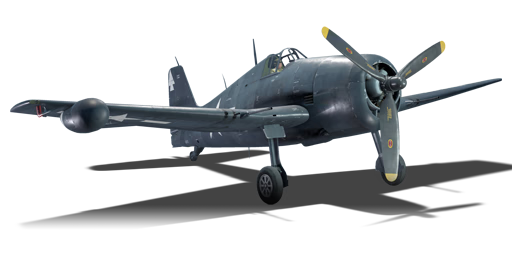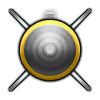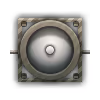



The F6F-5N was built to be a night fighter from the regular F6F-5. A Westinghouse AN/APS-6 radar was fitted to the right wing that served well in very low visibility conditions. The main differences between the 5 and 5N were the ability of the 5N to carry two 20 mm cannons and four 12.7 mm machine guns and the addition of the radar. Other than that, the F6F-5N was virtually identical to the F6F-5. The F6F-5N also had the same 2,000 hp Wright R-2800-10W engine found in the F6F-5. Because it was basically the same aircraft, the F6F–5N did have worse performance due to the added drag and weight of the radar and cannons. Nonetheless, the ability to comfortably carry out night patrols and missions was worth the performance hit.
The F6F-5N was introduced in Update 1.65 "Way of the Samurai". The F6F-5N's main differences between the F6F-5 are the weaponry changes and the addition of the radar. The addition of two 20 mm cannons is a big step up due to the sheer stopping power of the 20 mm rounds. With high-explosive rounds, players can easily take down enemy fighters and bombers. The F6F-5N also retains the ground ordnance loadout of the F6F-5 which is ample with a mix of bombs, rockets, and even torpedoes. On the other hand, the Hellcat has less than stellar flight performance. It struggles in vertical manoeuvres and in sustained turns. However, it does have favourable high-speed characteristics and has an excellent structural limit of 803 km/h (501.9 mph).
flaps
flaps
flaps
brake
| Belt | Belt filling | Armor penetration (mm) at a distance: | |||||
|---|---|---|---|---|---|---|---|
| 10 m | 100 m | 500 m | 1000 m | 1500 m | 2000 m | ||
| HEF-I/AP-T | 39 | 36 | 25 | 16 | 10 | 6 | |
| AP-T/AP-T/HEF-I/HEF-I | 39 | 36 | 25 | 16 | 10 | 6 | |
| HEF-I/HEF-I/HEF-I/AP-T | 39 | 36 | 25 | 16 | 10 | 6 | |
| AP-T/AP-T/AP-T/HEF-I | 39 | 36 | 25 | 16 | 10 | 6 | |
| HEF-I | 5 | 4 | 3 | 2 | 2 | 2 | |
| Belt | Belt filling | Armor penetration (mm) at a distance: | |||||
|---|---|---|---|---|---|---|---|
| 10 m | 100 m | 500 m | 1000 m | 1500 m | 2000 m | ||
| T/Ball/Ball/I/AP-I | 28 | 26 | 18 | 11 | 7 | 4 | |
| AP-I/AP-I/AP-I/T/I | 28 | 26 | 18 | 11 | 7 | 4 | |
| T/AP/AP/AP/AP-I/I | 30 | 27 | 20 | 13 | 9 | 6 | |
| T/T/T/T/T/AP-I | 28 | 26 | 18 | 11 | 7 | 4 | |
| AP/AP-I/AP-I/I/I | 30 | 27 | 20 | 13 | 9 | 6 | |
| Name | Weight | Slot | ||||||||
|---|---|---|---|---|---|---|---|---|---|---|
| 62.8 kg |  |  |  |  |  |  | ||||
| 534.2 kg |  |  | ||||||||
| 242.6 kg |  |  | ||||||||
| 500.8 kg |  |  | ||||||||
| 964.8 kg |  | |||||||||












Flight performance | |
|---|---|
Weaponry | ||
|---|---|---|